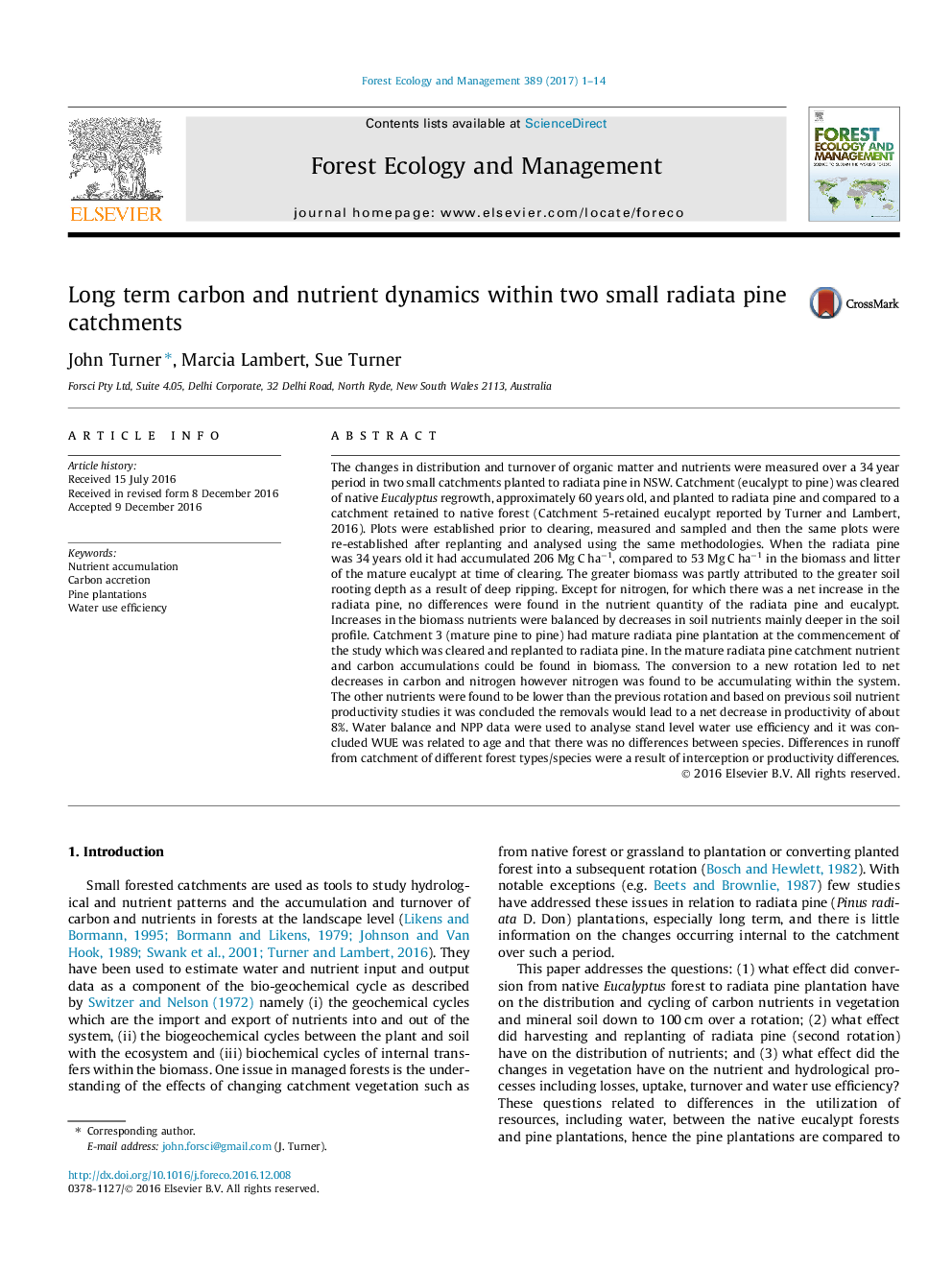| Article ID | Journal | Published Year | Pages | File Type |
|---|---|---|---|---|
| 4759484 | Forest Ecology and Management | 2017 | 14 Pages |
Abstract
The changes in distribution and turnover of organic matter and nutrients were measured over a 34 year period in two small catchments planted to radiata pine in NSW. Catchment (eucalypt to pine) was cleared of native Eucalyptus regrowth, approximately 60 years old, and planted to radiata pine and compared to a catchment retained to native forest (Catchment 5-retained eucalypt reported by Turner and Lambert, 2016). Plots were established prior to clearing, measured and sampled and then the same plots were re-established after replanting and analysed using the same methodologies. When the radiata pine was 34 years old it had accumulated 206 Mg C haâ1, compared to 53 Mg C haâ1 in the biomass and litter of the mature eucalypt at time of clearing. The greater biomass was partly attributed to the greater soil rooting depth as a result of deep ripping. Except for nitrogen, for which there was a net increase in the radiata pine, no differences were found in the nutrient quantity of the radiata pine and eucalypt. Increases in the biomass nutrients were balanced by decreases in soil nutrients mainly deeper in the soil profile. Catchment 3 (mature pine to pine) had mature radiata pine plantation at the commencement of the study which was cleared and replanted to radiata pine. In the mature radiata pine catchment nutrient and carbon accumulations could be found in biomass. The conversion to a new rotation led to net decreases in carbon and nitrogen however nitrogen was found to be accumulating within the system. The other nutrients were found to be lower than the previous rotation and based on previous soil nutrient productivity studies it was concluded the removals would lead to a net decrease in productivity of about 8%. Water balance and NPP data were used to analyse stand level water use efficiency and it was concluded WUE was related to age and that there was no differences between species. Differences in runoff from catchment of different forest types/species were a result of interception or productivity differences.
Related Topics
Life Sciences
Agricultural and Biological Sciences
Ecology, Evolution, Behavior and Systematics
Authors
John Turner, Marcia Lambert, Sue Turner,
